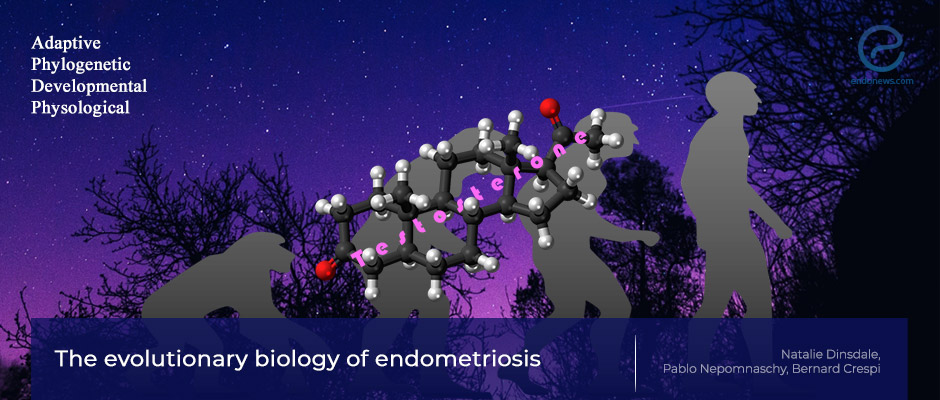Endometriosis from the "EVOLUTIONARY" point of view
Jun 21, 2021
Human diseases and disorders have ultimate, evolutionary causes
Key Points
Highlights:
- Pathologic conditions in human beings have ultimate evolutionary aspects.
- The ontogeny of endometriosis may be linked to the quantitative expression of prenatal factors, i.e. testosterone relative to estrogen.
Importance:
- High prenatal testosterone may contribute to the development of endometriosis.
- Correlation to genetic markers of prenatal testosterone including anogenital distance and the ratio of the 2nd to the 4th finger length.
What's done here:
- This is a critical review on the evolutionary and mechanistic bases for risk of endometriosis in humans, structured around four questions about phenotypes: phylogenetic history, development, mechanism, and adaptive significance
Key results:
- Endometriosis shows evidence of being caused in part by relatively low testosterone programming female reproductive development during fetal development.
- Important approaches regarding diagnosis, study, and treatment of endometriosis should emerge following this point of view.
Future implications:
- This hypothesis will spur further research benefiting women’s health, fertility, and well-being, as well as an increased understanding of the evolutionary bases for human disease.
Lay Summary
Natalie Dinsdale and associates from the Canadian Simon Fraser University Department of Biological Sciences published a critical review titled “ The evolutionary biology of endometriosis” in a recent issue of the journal “Evolution, medicine and public health”.
This review focuses on the evolutionary and mechanistic bases for the risk of endometriosis in humans searching for answers to four questions about phenotypes: phylogenetic history, development, mechanism, and adaptive significance.
Endometriosis is defined as the proliferation of endometrial tissue outside of the uterus, ectopia, with phylogenetic roots in the evolution of three aspects: highly invasive placentation, spontaneous endometrial decidualization, and extensive estrogen-driven endometrial proliferation finally resulting in menstruation.
Endometriosis is triggered by these traits and seems to emerge by low levels of testosterone during human development. Testosterone by affecting the hypothalamic-pituitary-ovarian axis at low levels may potentiate phenotypes mediating symptoms of endometriosis. High prenatal testosterone contributes to the development of endometriosis with correlation to genetic markers of prenatal testosterone including anogenital distance and the ratio of the 2nd to the 4th finger length. Polycystic ovary syndrome on the other hand, resides on the opposite side of this pathogenetic mechanism.
The hypothesis that endometriosis has roots in low prenatal testosterone, involving extreme expression of some phenotypes, supported by genetic, developmental, endocrinological, and morphological properties.
The authors suggest that this hypothetic approach will potentiate further research that would favor female health, fertility, and well-being, besides increased understanding of the evolutionary aspects of human disease.
Research Source: https://pubmed.ncbi.nlm.nih.gov/33854783/
endometriosis prenatal testosterone evolutionary pathogenesis

